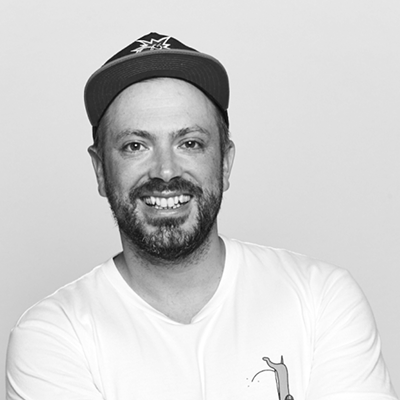When anxiety or panic attacks show up uninvited (as they do), it can feel like you’re the only one fumbling through. But you’re not. Mental health educator and counsellor Aimee Davies shares what’s really going on in our bodies when anxiety hits, along with simple grounding techniques to help calm the chaos. She talks about the power of open communication, sets some realistic expectations for recovery (because it’s never just a neat, straight line), and reminds us why breaking the stigma around mental health in creative workplaces matters so much. If you needed a gentle nudge that you’re not alone in this — consider this it.
Anxiety and panic attacks are more common than we like to admit in the creative industry. Yet so many of us still feel like we have to wrestle with them in silence. Whether it’s those pre-presentation nerves, the Sunday scaries, or a wave of panic that hits out of nowhere — you’re not alone. Not by a long shot.
This question was answered by Aimee Davies — a Mental Health Educator and Counsellor with lived experience supporting creative professionals through The Hey Mate Project — and Andy Wright, CEO of Streamtime and Founder of Never Not Creative, who’s no stranger to the pressures of creative work himself.
Aimee’s first piece of advice is simple but powerful: break the silence. "I think when we have anxiety or we experience panic attacks there is still stigma but stigma that maybe sometimes we can have ourselves as well and there's a fear around it."
Start normalising the conversation with the people you trust: "If you're working in a workplace where maybe this is something that you're living with and managing, if it's with your mentor your co-workers to just say hey like this is what I experienced, this is how it sort of manifests or looks, this is how I manage it."
Talking about it can ease the weight and create a safer space for everyone.
Aimee breaks it down into three parts — a simple way to make the overwhelming feel a bit more manageable: "Thinking about how you take care of yourself pre panic attack or anxiety attack or just episode of having higher levels of anxiety, during it and post."
Before: Spot the signs. Stressy weeks, constant negative self-talk, that project that’s quietly eating you alive — these are signals worth noticing.
During: Stay grounded and question the story in your head. "Talking to ourselves around what we say to ourselves or what our thoughts are isn't necessarily all the truth," says Aimee.
After: Give yourself a break. "After an anxiety attack or after a panic attack... it can take you know for me it might take two or three weeks until I start to feel normal in my state of calm." It’s okay if you’re not bouncing back overnight — you’re not a robot.
One of Aimee’s best insights is about changing the story you tell yourself: "Trying to change the conversation from fear-based to actually understanding what's happening physiologically works really well for me... this is just my cortisol levels and these are the things I know that can help me manage it."
Seeing it for what it is — a normal body response — can take away some of its power.
When things feel too much, do something that brings you back to your body. Aimee loves grounding and breath work. Andy swears by the gym. As Aimee says: "Moving our body... it could be a walk it could be low impact exercise it could just be some stretching but just getting that mind body connection can really help with managing those cortisol levels and also getting out of our head into that sort of state of flow."
You don’t have to run a marathon — a slow walk can do wonders.
If you’re right in the thick of it, remember this from Aimee: "Remembering that these things will pass if we're having high levels anxiety if it's about a project or if it is that we're managing an attack that it will pass."
It’s temporary — even if your brain tries to convince you otherwise.
Pushing through is tempting. But sometimes the best thing is to adjust your expectations. Aimee shares: "I know that for two or three weeks I'm not going to be at 100% capacity so how can I manage that and I think that's through part of the conversation with our workplace."
Giving yourself permission to heal is not a luxury — it’s necessary.
Aimee reminds us just how common this is: "Anxiety disorders are one of the top three mental illnesses in Australia, it's incredibly common. It's okay if we have panic attacks or anxiety attacks or if we're even just managing anxiety, it's really about moving it from a fear base to just understanding what your needs are physiologically and how we can meet them."
It’s not about perfect calm all the time — it’s about knowing yourself, having the tools to ride the waves, and giving yourself the same compassion you’d offer a friend.
You’re not alone. You’re not failing. And talking about it, learning what works for you, and giving yourself permission to rest — that’s what makes you strong, not weak.

CCO & co-owner of The Hallway, creating ideas with real-world impact. Led the Boys Do Cry campaign, reaching 100M+ and inspiring men to seek mental health support. Mentor, speaker & dad of two.

A mental health educator and counselor, combining years in the creative industry with nearly five years in therapy, now runs The Hey Mate Project to provide tailored support for creative professionals and organisations.

Founder of Never Not Creative, CEO of Streamtime & co-chair of Mentally Healthy, driven to make the creative industry fairer & more human. Believes great work should never cost wellbeing.



